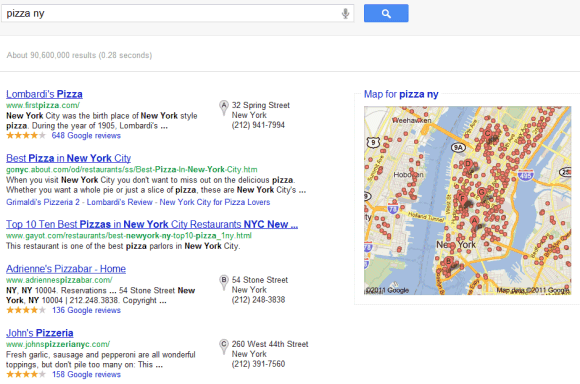Google’s search results are usually a great source of information, but Google’s goal has never been to send users to other pages. If Google can provide an instant answer to a query, then the answer is usually displayed in an OneBox, at the top of the search results page. Here’s a movie OneBox from 2007:

Google’s OneBoxes have provided weather forecasts, simple facts, definitions, unit conversions, stock information, movie times, sports scores, maps, package tracking information, in addition to results from other specialized search engines. They’re still useful, but Google can now provide a lot more information. You’ve probably noticed that OneBoxes are bigger and more complex these days:

Sometimes OneBoxes replace the top search results, as you can see if you try a query related to local businesses, like [pizza ny]:

The latest evolution of the OneBox is a huge section placed on the right side of the page. It doesn’t have an official name yet, but I’ll call it the info pane. For general local queries, it displays a static map. If you search for a local business, it now shows information about the business from Google Places.

Google also tests an info pane that shows information about people and companies: a search for [Twitter] shows the name of the CEO, the company’s address and other information from Wikipedia. It’s likely that the structured data is generated by Freebase, which is now owned by Google.


Google’s info panes could include a lot of useful information: detailed answers, fact sheets, interactive widgets, music/video players, slideshows etc. It’s a new way to display information and the space constraints of the OneBox have disappeared, now that the ads will be moved to the bottom of the page.
{ Thanks, Jérôme. }